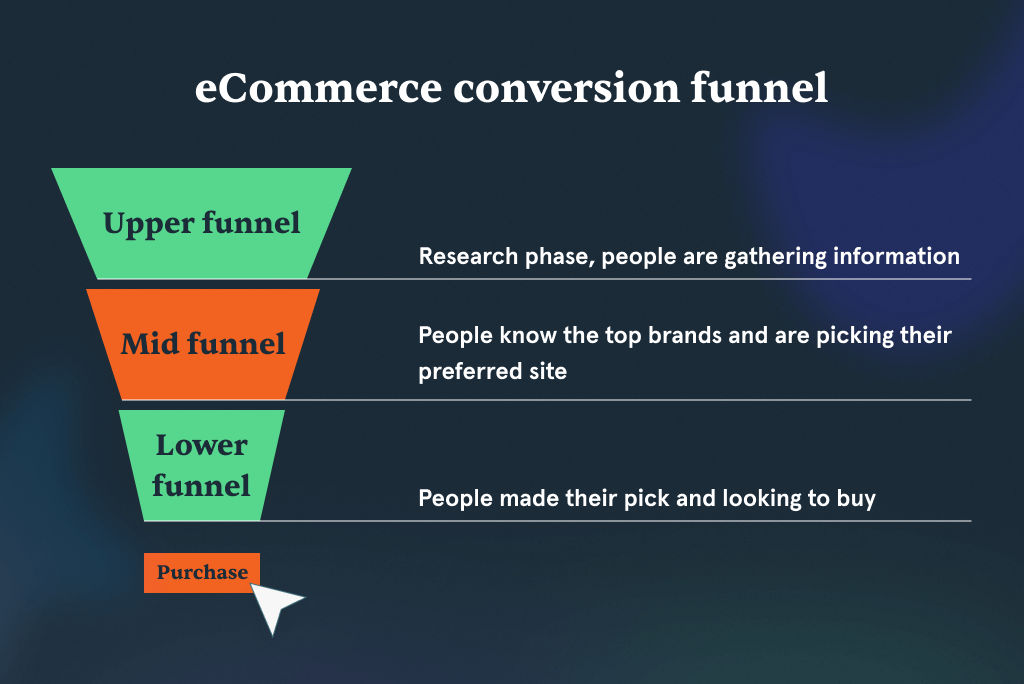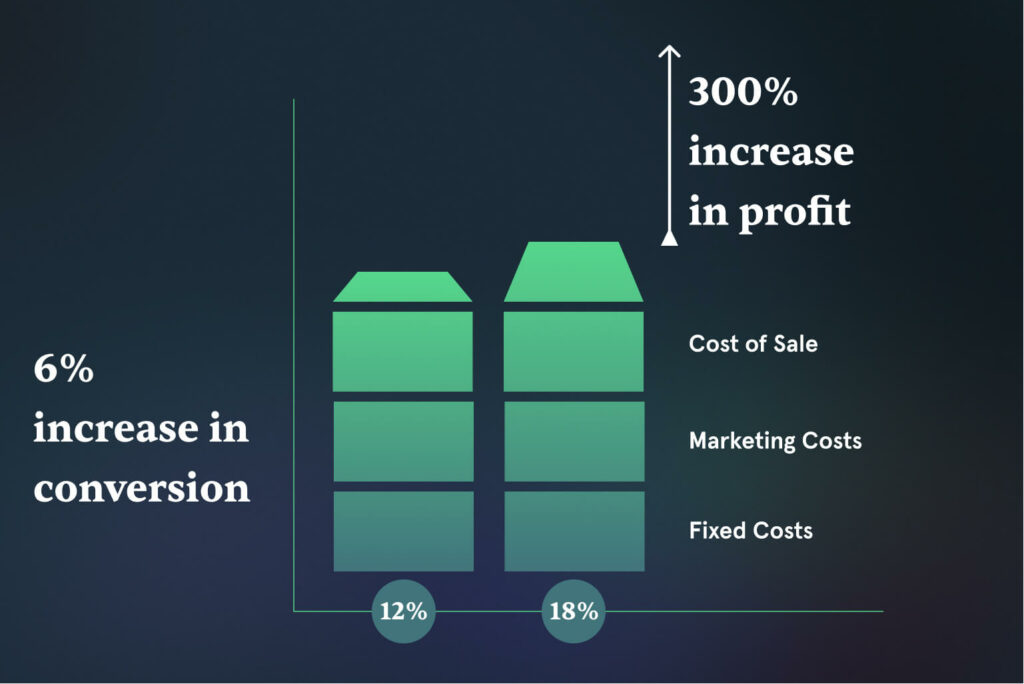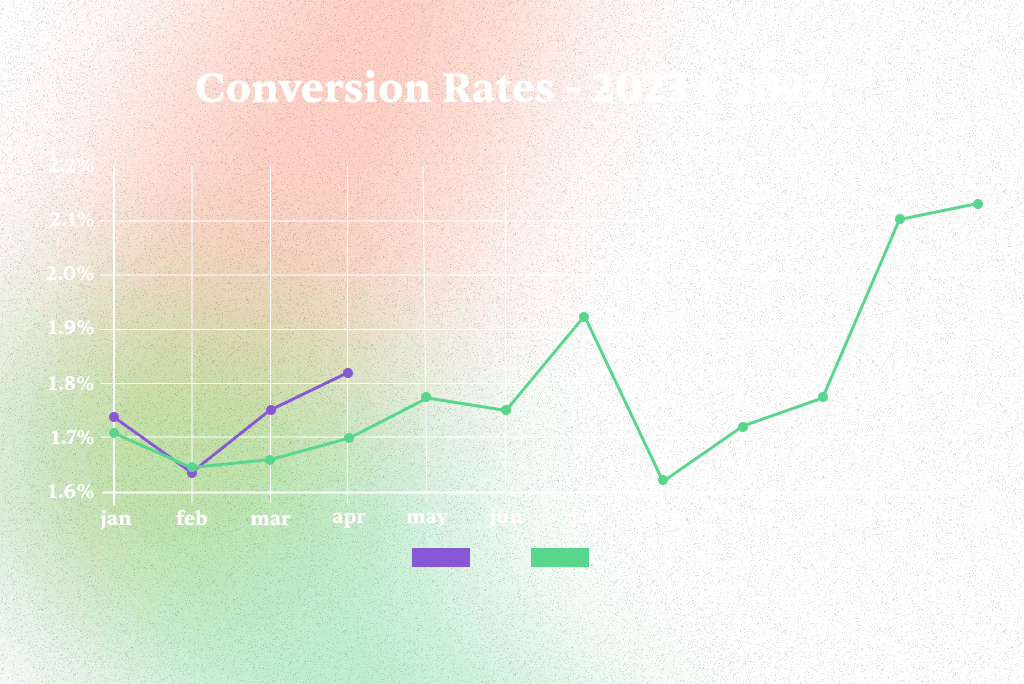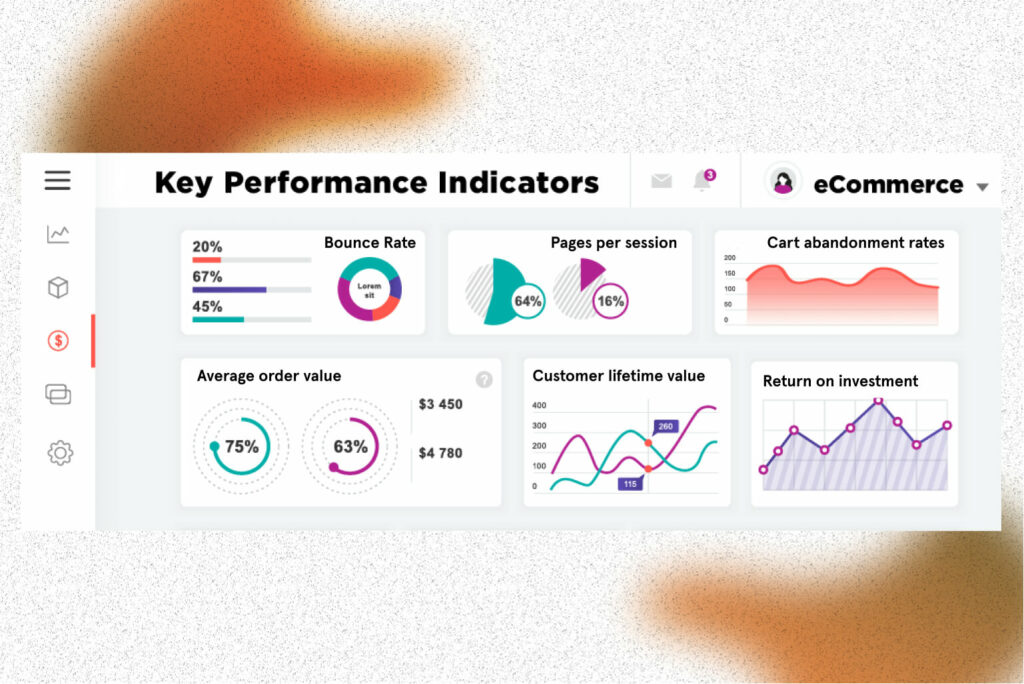In the world of online retail, the words ‘increase eCommerce sales conversion’ are music to any business owner’s ears. The realm of eCommerce is growing at an unprecedented rate, and with this expansion comes the necessity of mastering the art of sales conversion.
This article is your comprehensive guide, filled with practical tips, best practices, and effective strategies to help you navigate the path to increasing eCommerce sales conversions.
Understanding eCommerce Sales Conversion
Before we dive into how to increase eCommerce sales conversion, it’s crucial to grasp what it is and why it’s important. eCommerce sales conversion is the process of turning your eCommerce website visitors into paying customers. It’s the heartbeat of your business; without sales, your eCommerce store cannot survive.
Key metrics measuring sales success include the eCommerce conversion rate, average order value, and customer lifetime value. Monitoring these metrics is crucial for the health and success of eCommerce businesses, as it allows you to identify strengths and weaknesses in your sales process.
The Impact of eCommerce Conversion Rates on Your Business
Understanding how conversion rate is calculated is one thing, but knowing its impact on your eCommerce company can help you make strategic decisions that lead to more sales and growth.
How Conversion Rate Affects Your Bottom Line
Your eCommerce conversion rate directly impacts your bottom line. A higher conversion rate means more of your site visitors are making purchases, increasing overall revenue. A lower conversion rate, on the other hand, indicates that you need to catch up on potential sales.
For example, if your eCommerce store receives 10,000 visitors a month and has a conversion rate of 2%, you’d make 200 sales. But if you were to increase your eCommerce conversion rate to 3%, you’d make 300 sales — a significant increase, especially when scaled over time.
Conversion Rate and Customer Acquisition
Conversion rate is also closely tied to customer acquisition. The better you are at converting visitors into customers, the more cost-effective your customer acquisition efforts will be. This is because you’re able to make more sales without needing to increase your eCommerce website traffic, which can be both costly and time-consuming to achieve.
Conversion Rate and Customer Loyalty
A high conversion rate can also be a sign of strong customer loyalty. Customers with positive shopping experiences with your eCommerce store are more likely to return and make repeat purchases. Improving your conversion rate can also help boost customer retention, which is often more profitable than acquiring new customers.
The Influence of Conversion Rate on Business Strategy
Your conversion rate can also guide your business strategy. By identifying pages or products with low eCommerce conversion rates, you can pinpoint areas of your eCommerce site that need improvement. You may need to optimize your product descriptions, improve your website’s navigation, or offer better customer support. Conversely, pages with high conversion rates can serve as models for other parts of your site.
Understanding how to calculate your conversion rate is just the beginning. The real value comes from using this metric to make informed decisions that help your eCommerce business grow and thrive. You can drive more sales, improve customer loyalty, and guide your overall business strategy by continuously monitoring and improving your conversion rate.
SEO Ready to dominate the search rankings? Let’s make it happen together. Grow organic traffic to boost performance, increase conversions, and sell more. No Black Hat SEO.
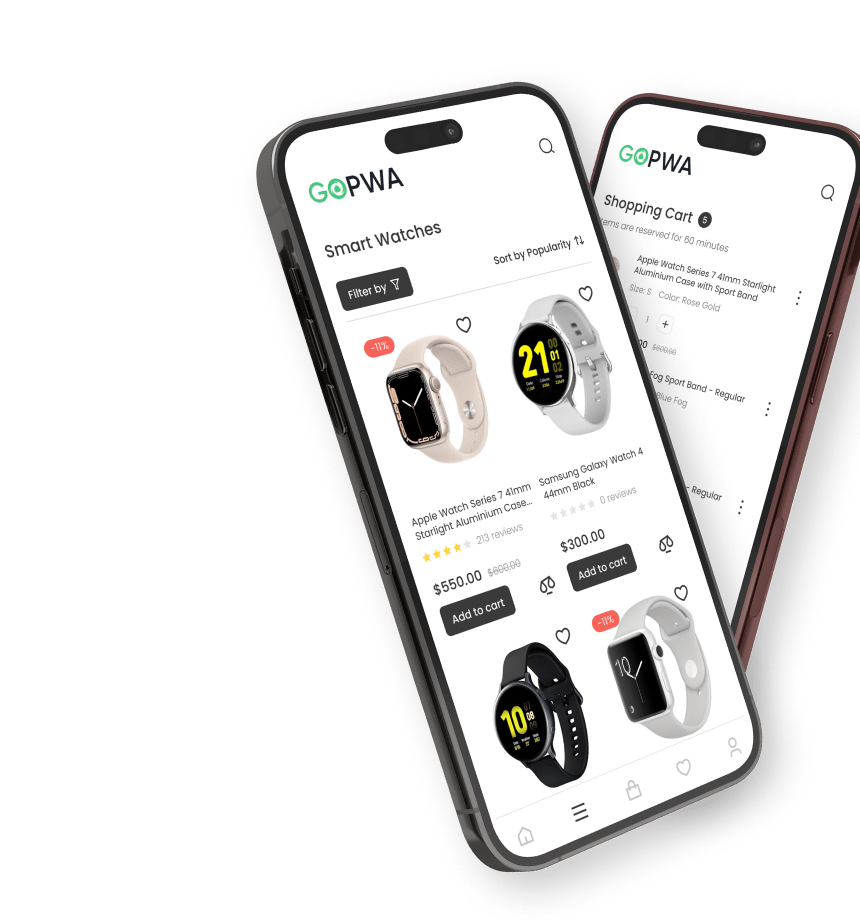
What is a Good eCommerce Conversion Rate?
Defining what constitutes a “good” eCommerce conversion rate can be tricky, as it varies depending on several factors. These include your industry, the types of products you sell, your price points, and the quality of your eCommerce site traffic, among other things. However, it’s still possible to provide a general benchmark.
According to a report by IRP Commerce, the average global eCommerce conversion rate is around 1.82%. However, this rate can fluctuate depending on the factors mentioned earlier. Some online eCommerce stores may have a conversion rate as high as 3-5%, while others might be below 1%.
So, how do you determine if your eCommerce conversion rate is good? Here are a few considerations:
- Industry Standards: Look at the average conversion rates within your specific industry to get a more accurate benchmark to aim for.
- Competitor Comparison: Consider how your conversion rate compares to your direct competitors. If they’re converting a higher percentage of visitors into customers, it’s worth investigating why and how you might improve.
- Historical Performance: Evaluate your conversion rate over time. If it’s improving, you’re likely on the right track. It might be time to reassess your strategies if it’s declining or stagnant.
- Business Goals: Finally, consider your business goals. If you’re meeting or exceeding your sales targets with your current conversion rate, it might be “good” for your specific needs.
While striving for a high eCommerce conversion rate is essential, remember that it’s just one success metric. Consider it alongside other key metrics like average order value, customer lifetime value, and overall return on investment.
In the end, what’s most important is continuous improvement. Regularly testing and optimizing your site to improve the shopping experience can help you optimize your eCommerce conversion rate, regardless of the average.
Metrics to Help Measure eCommerce Conversions
While the conversion rate is a fundamental metric for any eCommerce business, understanding your overall performance is just the tip of the iceberg. Several other metrics can provide valuable insights into your customers’ behavior and your site’s effectiveness. Let’s delve into some key metrics you should track to measure eCommerce conversions.
Bounce Rate
The bounce rate is the percentage of visitors who leave your site after viewing only one page. A high bounce rate might indicate that visitors aren’t finding what they’re looking for or that your site isn’t user-friendly. By reducing your bounce rate, you can increase the chances of eCommerce conversions.
Average Time on Site
This metric measures the average length of time visitors spend on your site. If visitors spend a lot of time on your site, they engage with your content more and are more likely to convert.
Pages Per Session
Pages per session measures the average number of pages a visitor views during a single visit. More pages per session can indicate higher engagement and interest in your products, increasing the likelihood of conversion.
Consulting Get your website back on track to high profits. We’ll identify what’s wrong with your website, choose the best tools, and fix any issues keeping your business from growing.
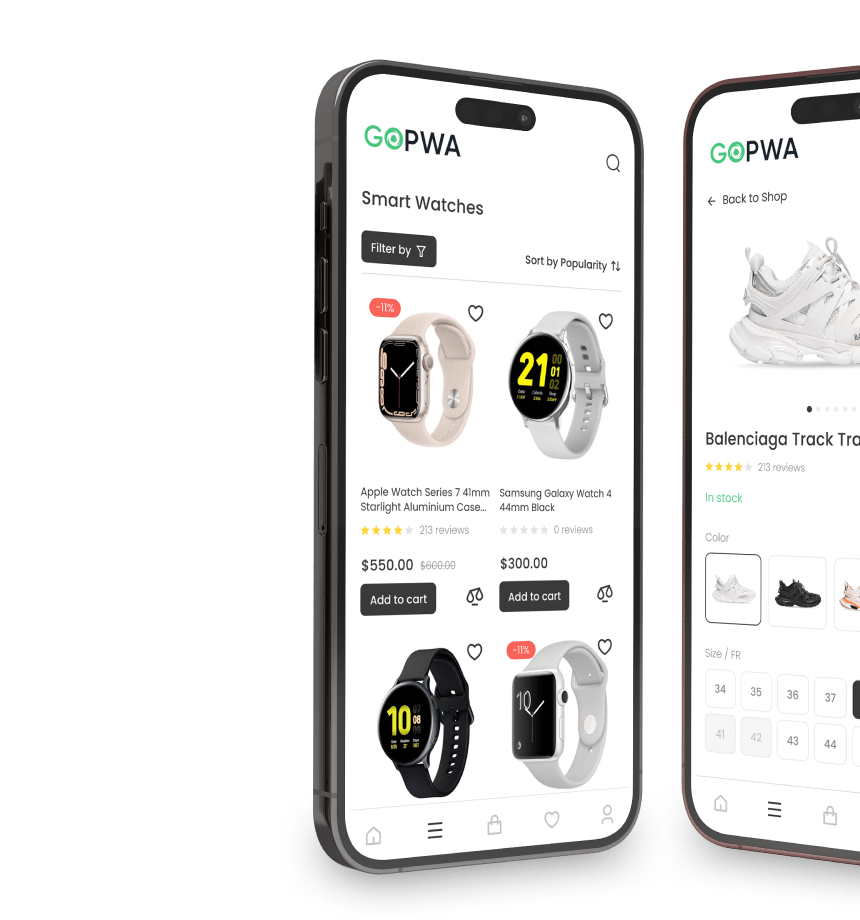
Cart Abandonment Rate
Cart abandonment rate is the percentage of visitors who add items to their cart but do not complete the checkout process. A high cart abandonment rate could signal problems with your checkout page and the whole process. Sometimes, unexpected costs like shipping.
Average Order Value (AOV)
AOV is the average amount of money each customer spends per transaction. By increasing your AOV, you can boost your revenue without increasing your conversion rate.
Customer Lifetime Value (CLTV)
CLTV is the total amount of money a customer is expected to spend in your eCommerce store over their lifetime. It’s an important metric to consider, as it can be more cost-effective to retain existing customers than to acquire new ones.
Return on Investment (ROI)
ROI measures the profitability of your investments. In the context of eCommerce, this could include investments in advertising, SEO, or eCommerce site improvements. A positive ROI indicates that your strategies are working to drive conversions and sales.
You can gain a more holistic view of your eCommerce performance by tracking these metrics alongside your conversion rate. They can help identify areas of strength and weakness, guide your eCommerce conversion rate optimization efforts, and ultimately, increase your eCommerce sales conversion. Remember, the more data you have, the more informed your decisions will be.
Strategies for Increasing eCommerce Sales Conversion
In the quest for conversion rate optimization, there’s an array of tactics that could prove beneficial. Here, we delve into 25 distinct, detailed strategies that can serve as a roadmap for improving your eCommerce conversion rates.
1. Embrace Simplicity in Website Design
A clean, user-friendly design makes it easier for potential customers to navigate your site and find what they’re looking for. Clutter can overwhelm visitors, leading to a poor user experience and a decrease in conversions. So, keep your design sleek and intuitive, focusing on usability above all else.
2. Prioritize Site Speed
In today’s fast-paced digital world, consumers expect quick, seamless online experiences. A slow site can deter potential customers, leading to higher bounce rates and fewer conversions. Regularly test your site’s speed and make necessary speed optimizations, such as compressing images and minimizing JavaScript files, to ensure it loads quickly.
3. Showcase High-Quality Product Images
Visuals play a critical role in online shopping, where customers can’t physically inspect products. High-quality images can accurately represent your products, helping customers feel more confident in their purchase decisions. Consider offering multiple views and zoom functionality for a more detailed inspection.
4. Craft Detailed Product Descriptions
Alongside images, your product descriptions should provide all the necessary information a customer might need. They should be compelling and informative, highlighting key features and benefits that make your products stand out. This can help alleviate doubts or questions, pushing customers further down the conversion funnel.
5. Display Customer Reviews
In an era where consumers often seek peer validation, customer reviews can serve as powerful social proof. Encourage your customers to share their experiences and prominently display these reviews on your product pages. They can significantly boost trust and credibility, leading to higher conversion rates.
6. Offer Free Shipping
Shipping costs can be a significant deterrent for many online shoppers. Offering free shipping can make your products more attractive and reduce cart abandonment rates. Consider the financial implications and see if the increase in conversions could offset the cost of providing free shipping.
7. Provide Multiple Payment Options
Different customers have different preferences when it comes to payment methods. By offering various options, from credit and debit cards to digital wallets and buy-now-pay-later services, you can cater to these preferences and remove barriers to purchase.
8. Optimize for Mobile
With the rise of mCommerce, a mobile-friendly site is no longer enough. Ensure your site is fully responsive, providing a seamless shopping experience across all devices. This can significantly expand your reach and improve your conversion rates. You can create a responsive eCommerce website or build two native apps for iOS and Android. Better yet, opt for PWA development to speed up time to market and return on investment.
9. Leverage Retargeting Ads
Retargeting ads can be like gentle reminders, encouraging customers to return to your site and complete their purchase. They’re a powerful tool for re-engaging customers who’ve shown interest in your products but didn’t convert on their first visit.
10. Send Abandoned Cart Emails
Like retargeting ads, abandoned cart emails can nudge customers to complete their purchases. They serve as a reminder of what customers left behind and can even include incentives like discount codes to motivate a return to your site further. If you decide to build a PWA storefront, you’ll be able to send push notifications to engage with customers directly.
11. Offer a Guest Checkout Option
Forcing customers to create an account can deter them from completing their purchase. A guest checkout option can streamline the process, making it quicker and easier for customers to convert.
12. Use Clear Call-to-Action (CTA) Buttons
CTAs guide visitors toward conversion. Ensure your CTAs are clear, concise, and prominently placed. Test different colors, wording, and positions to see what works best for your audience.
13. Offer Live Chat Support
Live chat can provide immediate assistance to customers, resolving any doubts or issues that might deter a purchase. It adds a human touch to the online shopping experience, building trust and rapport with your customers.
14. Implement a Loyalty Program
A well-designed loyalty program can encourage repeat purchases, turning one-time buyers into loyal customers. It can enhance customer lifetime value, a critical metric in eCommerce, and increase overall conversions in the long run.
15. Personalize the Shopping Experience
From product recommendations based on browsing history to personalized email marketing, personalization can make customers feel valued and understood. This leads to a more engaging shopping experience, which can boost both customer satisfaction and conversion rates.
16. Provide a Comprehensive FAQ Section
An FAQ section can address common customer concerns and questions, eliminating any roadblocks on the path to purchase. Ensure your FAQs are easy to find and cover a wide range of topics, from shipping and returns to product care and use.
17. Optimize Your Product Search Function
A swift and precise search function can significantly enhance the shopping experience, helping customers find exactly what they’re looking for. Invest in improving your search functionality, including features like auto-suggest and filters, to make product discovery a breeze.
18. Offer a Price Match Guarantee
A price match guarantee can make your customers feel confident that they’re getting the best deal, increasing the likelihood of a purchase. If a customer finds a lower price elsewhere, match it. This not only secures a sale but also builds trust with your customers.
19. Show Stock Levels
Displaying stock levels can create a sense of urgency, nudging customers to make a purchase sooner rather than later. If an item is running low, let your customers know. This can also help manage customer expectations and prevent disappointment.
20. Use Video Demonstrations
Videos can showcase your products in action, providing a more immersive view than static images. They can enhance understanding of your products and boost customer confidence, leading to higher conversion rates.
21. Provide Detailed Shipping Information
Clear, upfront information about shipping costs, options, and timelines can set accurate expectations and prevent cart abandonment. Make sure all this information is easily accessible from every page of your site.
22. Display Trust Badges
Trust badges, like security seals and payment logos, can reassure customers about the safety of their personal and payment information. This can alleviate security concerns and boost your site’s credibility, increasing the likelihood of a conversion.
23. Run Promotions and Sales
Limited-time offers can create a sense of urgency, encouraging more immediate purchases. Whether it’s a seasonal sale or a flash deal, promotions can draw in customers and boost conversions.
24. Implement Upselling and Cross-Selling Techniques
Upselling and cross-selling can increase your average order value and boost conversions. Suggest related products or higher-end alternatives to engage customers further and increase the potential revenue from each transaction.
25. Regularly Conduct A/B Testing
A/B testing allows you to compare different versions of your website to see what performs best. It’s a powerful tool for continual eCommerce rate optimization, helping you make data-driven decisions to enhance your site and boost conversions.
Remember, these strategies are not one-size-fits-all. The key is to test, learn, and iterate. By implementing these tactics and adjusting based on your findings, you can improve your eCommerce conversion rate and drive more sales.
Increase eCommerce Sales Conversion: Key Takeaways
We’ve covered a lot of ground in this comprehensive guide to increasing conversion rates.
Increasing eCommerce sales conversion is a complex process, but it is possible to achieve significant results with the right strategies and tools. Following the tips and advice in this article can improve your eCommerce sales conversion and boost your bottom line.
Remember that while the goal is to increase conversions, providing a positive, seamless shopping experience for your customers is equally important. Happy, satisfied customers are more likely to become repeat customers, and they can become advocates for your brand, helping to drive even more conversions in the future. So, focus on conversions, but never at the expense of customer satisfaction.
Happy converting!


